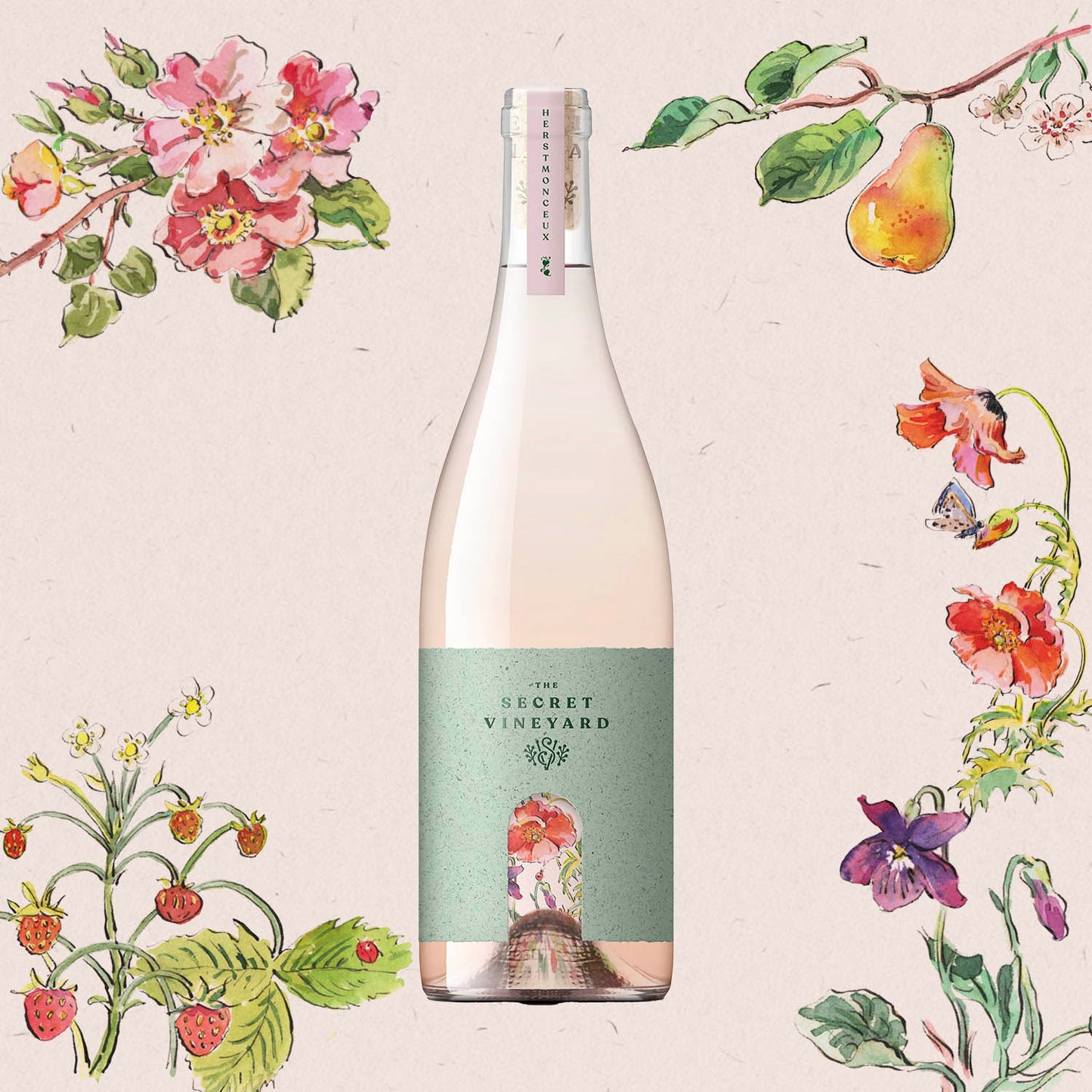Guest post by Helen Soudain, The Secret Vineyard.
Global rosé wine sales have been on an upward trajectory for over two decades, while France remains the largest consumer, glugging over a third of the world’s rosé, the UK, U.S and Germany have also shown significant growth.
Premiumisation is one factor that has driven growth, a typical pub wine list used to feature maybe one cherry red, off-dry, mass-produced option. Which might in-part explain why you so often hear people say that they ‘don’t like rosé’. Today, it’s rare to find a pub list that doesn’t feature at least a Provence option alongside a budget, maybe slightly sweet choice and hopefully an English rosé!

English Rosé Boom
Between 2018 and 2023, sales of English and Welsh wines more than doubled, increasing by 117% from 1.2 million to 2.6 million bottles. Retailers have also reported significant increases in English rosé sales; Majestic Wines saw a 200% year-on-year growth, while Aldi reported 160%.
Another reason for the rosé boom is that consumers are now enjoying it all year round, improved quality, broader variety and greater availability have all contributed to this shift.
Rosé is also surprisingly versatile, we had fun over Christmas pairing our Secret Vineyard Rosé with smoked salmon canapés, pâté and charcuterie, roast turkey and pork and even mince pies. Our rosé is slightly fuller bodied than a typical Provence rosé, due to the grape varieties used and wine making techniques employed. This opens the food pairing opportunities up to more substantial dishes, more likely to be enjoyed all year round. While some Provence rosés might be overpowered by these richer foods- due to the flavours of the wine being less pronounced, vs a typical English rosé, that might display more prominent red fruits, berry and citrus notes.

We also serve our rosé to our retreat guests down by the lake, on a hot summer’s day, it’s crisp and refreshing with delicious notes of wild strawberries, rhubarb with slight minerality and a slightly lower abv of approx. 12% – making it the perfect choice.

Growing Grapes for Rosé and Wine Making
Wine makers and grape growers in Provence have perfected the art of producing rosé wine over many decades, by using specific grape varieties, namely, Grenache, Cinsault, Syrah and Mourvèdre, along with minimal extraction, cool fermentation and no oak aging, this style has been fine tuned.
In the same way, UK grape growers and wine makers are continually working on the magic formula, with the added complication of vintage variation, meaning conditions can vary wildly year-on year, unlike in Provence, where there is a greater certainty of sunshine at the right time.

Fortuitously, grape varieties that thrive in our cool climate, such as Pinot Noir, Pinot Meunier, Pinot Noir Précoce (cousin of Pinot Noir), Chardonnay and Pinot Gris, also form an excellent blend for still English rosé. The major challenges include ripening the fruit and fending off mildew, rot, deer, badgers, birds and wasps! But if all of this goes well, then the wine maker has a chance to create a wine that can easily compete on the global stage.
In fact, England’s cool maritime climate enables grapes to slowly ripen, retaining freshness, allowing for elegant and crisp wine to be made.
UK soil types, typically chalk, limestone, or in our case clay and sandstone, are conducive to rearing grapes that can display minerality and finesse.

Branding and labels cannot be overlooked, and Provence has done what Champagne did for sparkling wine, in that the millions spent on branding has given the wine luxury status. From the coolest bars in Ibiza, to Michelin star restaurants, the hippest festivals and 1st class cabins, Provence rosé is always on the guest list. And to a certain extent, as an English wine producer, this benefits us, because rosé is no longer an embarrassing dusty forgotten bottle on the rack, it now symbolises celebrity chicness and is generally seen as being sophisticated. It’s not gender specific either, although there is still the odd macho guy who denies himself the chance of drinking it (in public at least).
When we embarked on our branding journey we did float the idea of a more Provence style image, but in the end, we wanted our band to convey the English countryside.
 We felt that it was important to be authentic and for the label and brand to feel premium, but also unique and full of provenance. We worked with a Hastings based, super talented artist called Claire Fletcher, who drew us delicate, detailed illustrations of the botanicals growing in and around the vineyard, such as wild roses, elderflower, violets and peaches. The botanicals can be seen through the green archways on the front label, the archways are the hedges that grow around the vineyard, that are reminiscent of a ‘Secret Garden’. Explore The Secret Vineyard’s wine range: www.thesecretvineyard.com
We felt that it was important to be authentic and for the label and brand to feel premium, but also unique and full of provenance. We worked with a Hastings based, super talented artist called Claire Fletcher, who drew us delicate, detailed illustrations of the botanicals growing in and around the vineyard, such as wild roses, elderflower, violets and peaches. The botanicals can be seen through the green archways on the front label, the archways are the hedges that grow around the vineyard, that are reminiscent of a ‘Secret Garden’. Explore The Secret Vineyard’s wine range: www.thesecretvineyard.com


